Cooking with kids: How to teach your kid to cook at all ages
THE YOUNGER you let your kids in the kitchen, the better, a leading cookbook author says. Here’s ways to familiarise your kids with different foods from an early age.
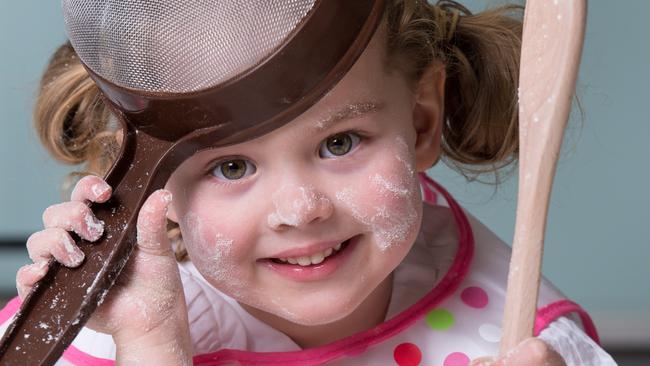
VIC News
Don't miss out on the headlines from VIC News. Followed categories will be added to My News.
IT’S never too soon to get kids in the kitchen and the younger the better, says cookbook author Louise Keats, mum of two and granddaughter of cooking legend Margaret Fulton.
“Even babies can learn so much from playing with ingredients and watching their parents cook,” the food and nutrition columnist for taste.com.au said.
“Your two year old might peel a banana, while your five year old might mash it and make banana bread.”
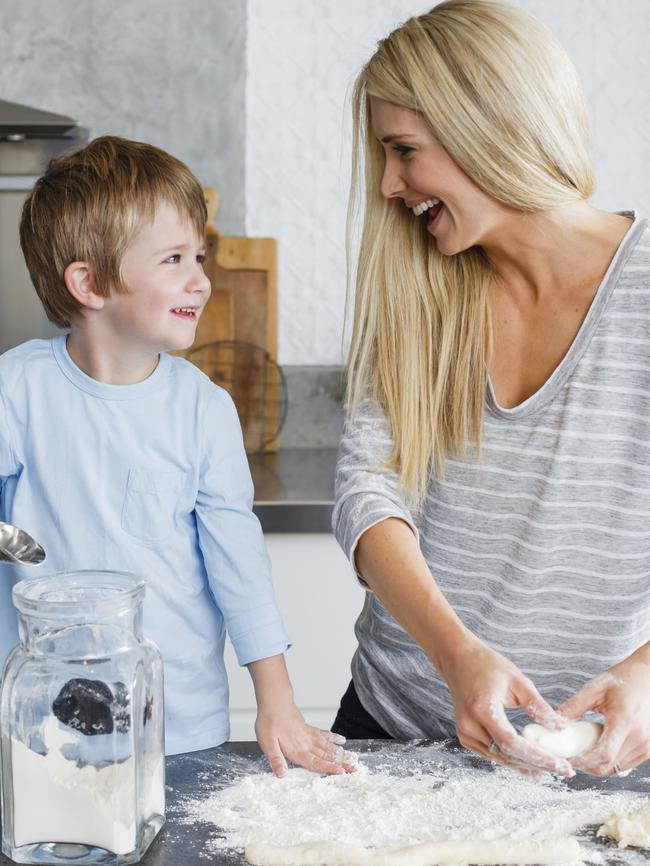
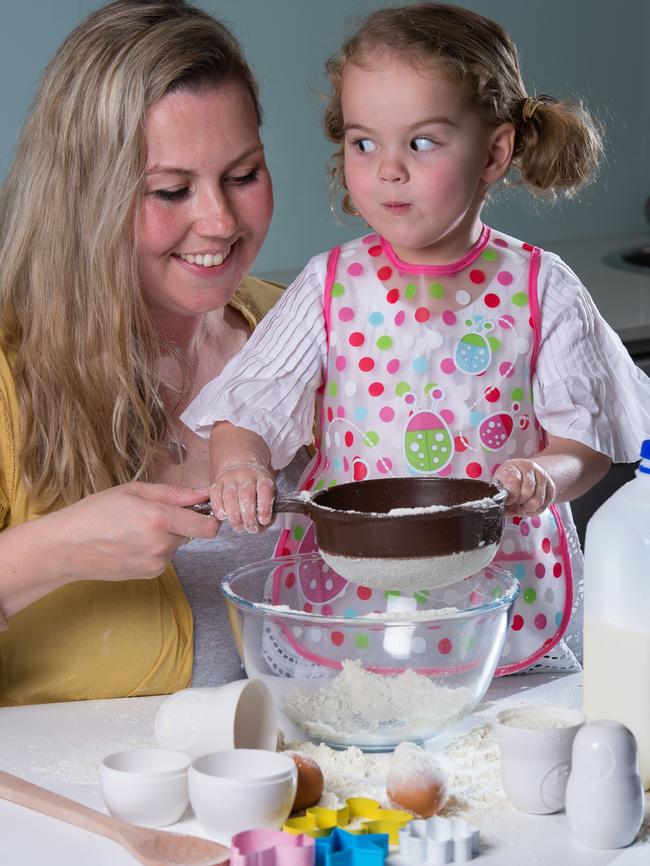
Keats said while cooking with children was messy, the benefits far outweighed the “disaster zone”.
For example, research shows that kids who cook are less likely to be fussy eaters and are better co-ordinated, with tasks such as chopping and whisking helping to develop motor skills and improve handwriting.
Cooking also teaches maths and science by measuring ingredients and observing cooking processes such as watching muffins rise.
“But ultimately the most precious gift you can give your child when they leave home is teaching them how to cook,” Keats said.
“If they can prepare themselves a few decent dishes, you know they’ll eat well for the rest of their lives.”
Melbourne mum Natalie Esler tries to involve daughter Millie, 4, in preparing the nightly meals.
“We select ingredients, then Millie might wash the spuds and add ingredients to the pot,” she said.
“By helping to cook her own dinner, it’s encouraging her to eat it all up, which is a bonus.”
Mrs Esler said she hopes Millie will have a bulging recipe collection when she’s old enough to cook for herself — like Mrs Esler did of her mother’s and grandmother’s dishes.
“Home economics appears to be a dying subject at schools so it’s up to us to teach our kids these skills.”
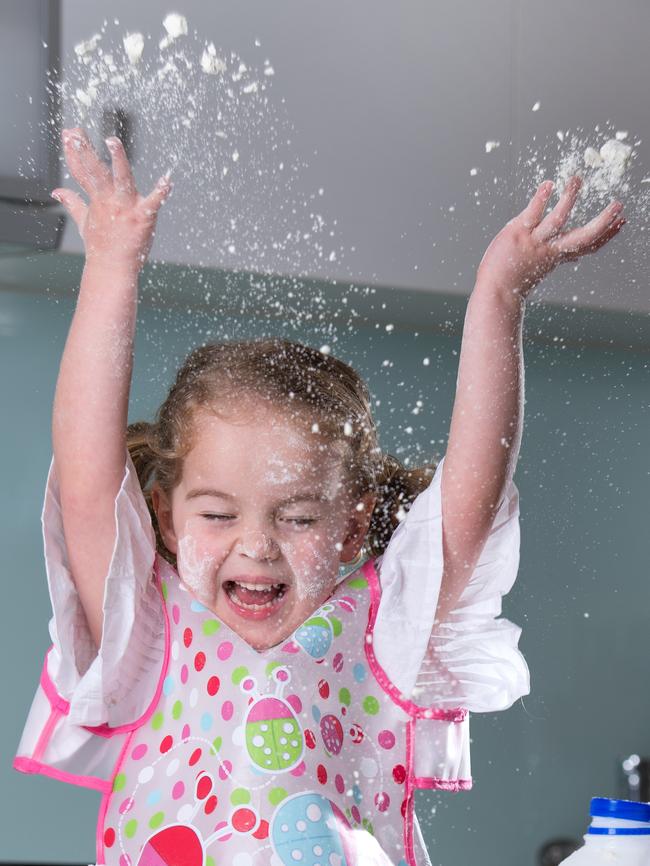
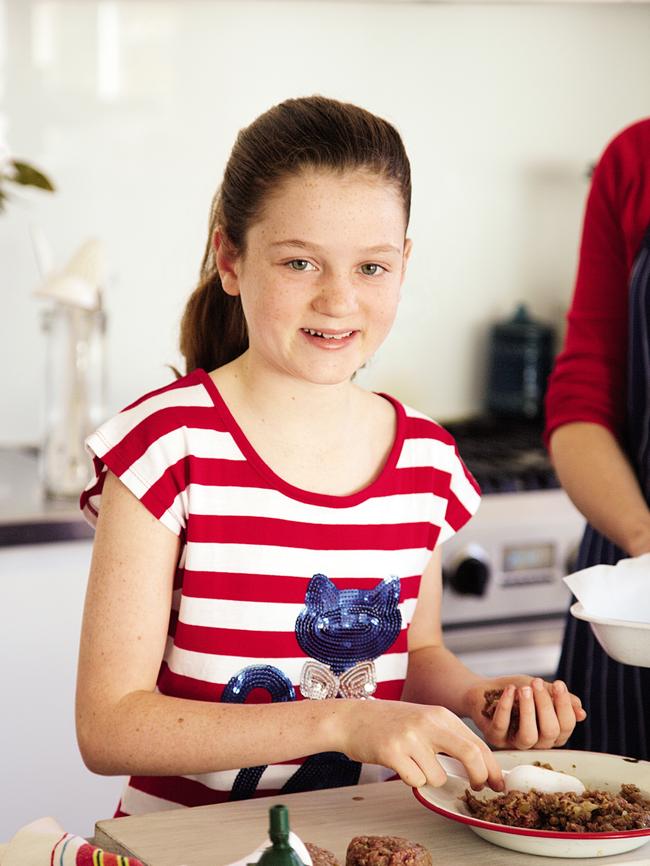
LOUISE KEATS’ AGE GUIDE TO MAKING A JUNIOR MASTER CHEF
BABY:
* Regularly include a baby in the kitchen, even if it’s putting her on your hip as you stir a risotto.
* Give her a mango pip to play with and suck on. Engaging with food and building familiarity broaden palates and reduces the chance of fussy eating.
TODDLER
* Start with some basic food preparation such as peeling a mandarin, pulling the husks off corn and shelling edamame — tasks which help children to engage with a wide variety of ingredients and help stave off the distrust of new food (neophobia) that typically happens at this age.
* Stirring pancake batter and cutting out sandwich shapes is seriously fun.
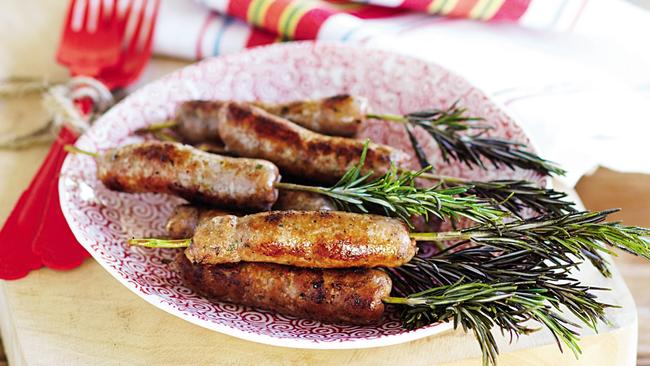
AGE 3-4
* Step up the kitchen responsibilities with tasks such as rolling bliss balls, mashing avocado and making biscuit shapes from dough.
* Buy kid-friendly knives to teach your child the first stages of chopping and improve their fine motor skills.
AGE 5-6
* Start following a recipe with your child and make a favourite dish together from scratch. It can be as easy as smoothies, fruit sticks, muffins or pesto. The sense of achievement is heartwarming.
* Measuring with cups, teaspoons and scales all offer a practical maths lesson.
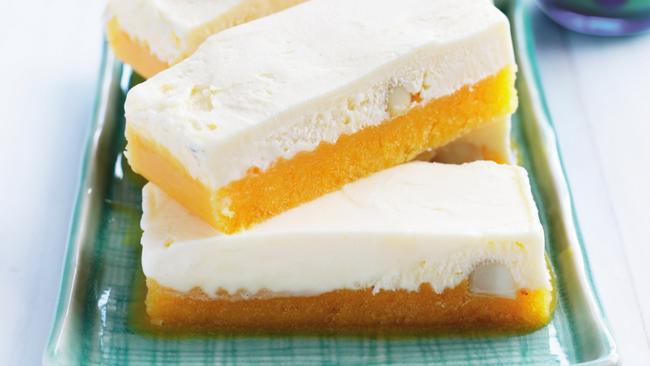
AGE 8-10
* Start to teach your child how to use the oven and cooktop (under a watchful eye).
* Give access to a broader range of utensils that haven’t yet been mastered with tasks such as whipping cream with a whisk, flipping French toast in the frying pan with a spatula or icing cupcakes
10+
* Many children can be trusted to start using appliances like blenders and food processors with a little less supervision.
* They’ll also have more strength and finesse with tasks like pouring batter into a cake tin and chopping herbs.
* Encourage your child to have their own signature dishes. They should be different from siblings’ dishes so there’s a sense of ownership, which will give confidence and a lifetime of feeling at home in the kitchen.
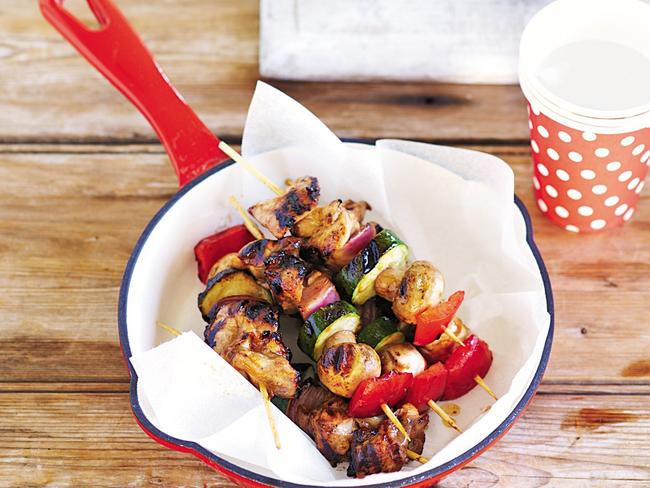
RECIPE: STICKY CHICKEN STICKS
Makes 12
Ingredients
500g chicken thigh fillets, cut into 3cm cubes
160g sachet Maggi BBQ 10-minute marinade
1 large red capsicum, cut into 2.5cm cubes
12 button mushrooms
1 zucchini, cut into 1cm thick slices
1 medium red onion, cut into 2.5cm cubes
Method
— Place chicken in a large glass or ceramic dish.
— Add three quarters of the marinade.
— Reserve remaining marinade. Stir to combine.
— Cover with plastic wrap. Refrigerate for 10 minutes to marinate.
— Thread capsicum, mushrooms, zucchini, onion and chicken onto 12 small bamboo skewers. — Heat a greased barbecue plate on medium heat.
— Cook skewers, turning, and brushing with reserved marinade, for 6-8 minutes or until cooked through. Serve.
Recipe: Kirrily La Rosa
Photography: Cath Muscat
Styling: Saskia Hay
Food Preparation: Katrina Woodman


